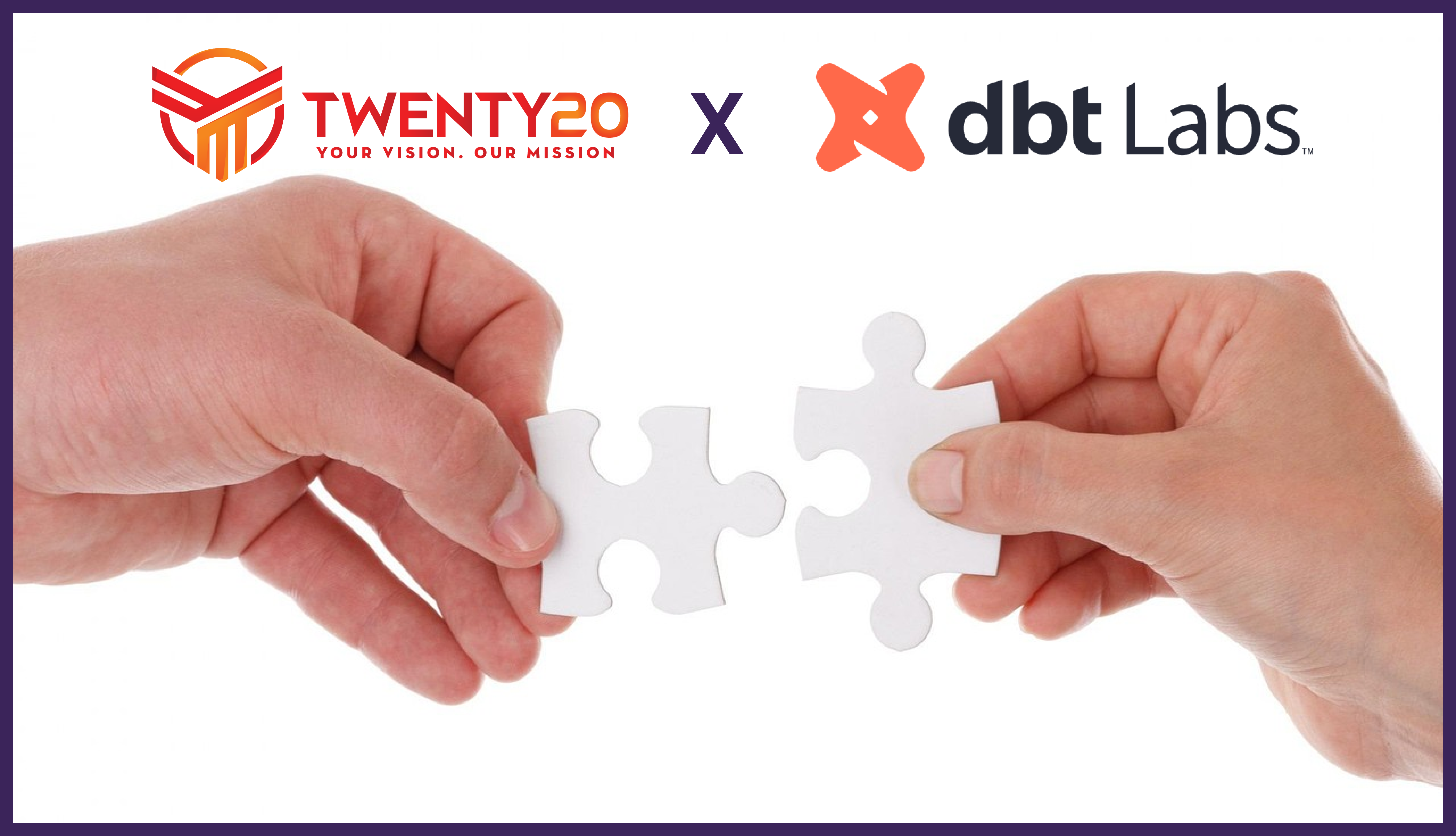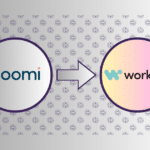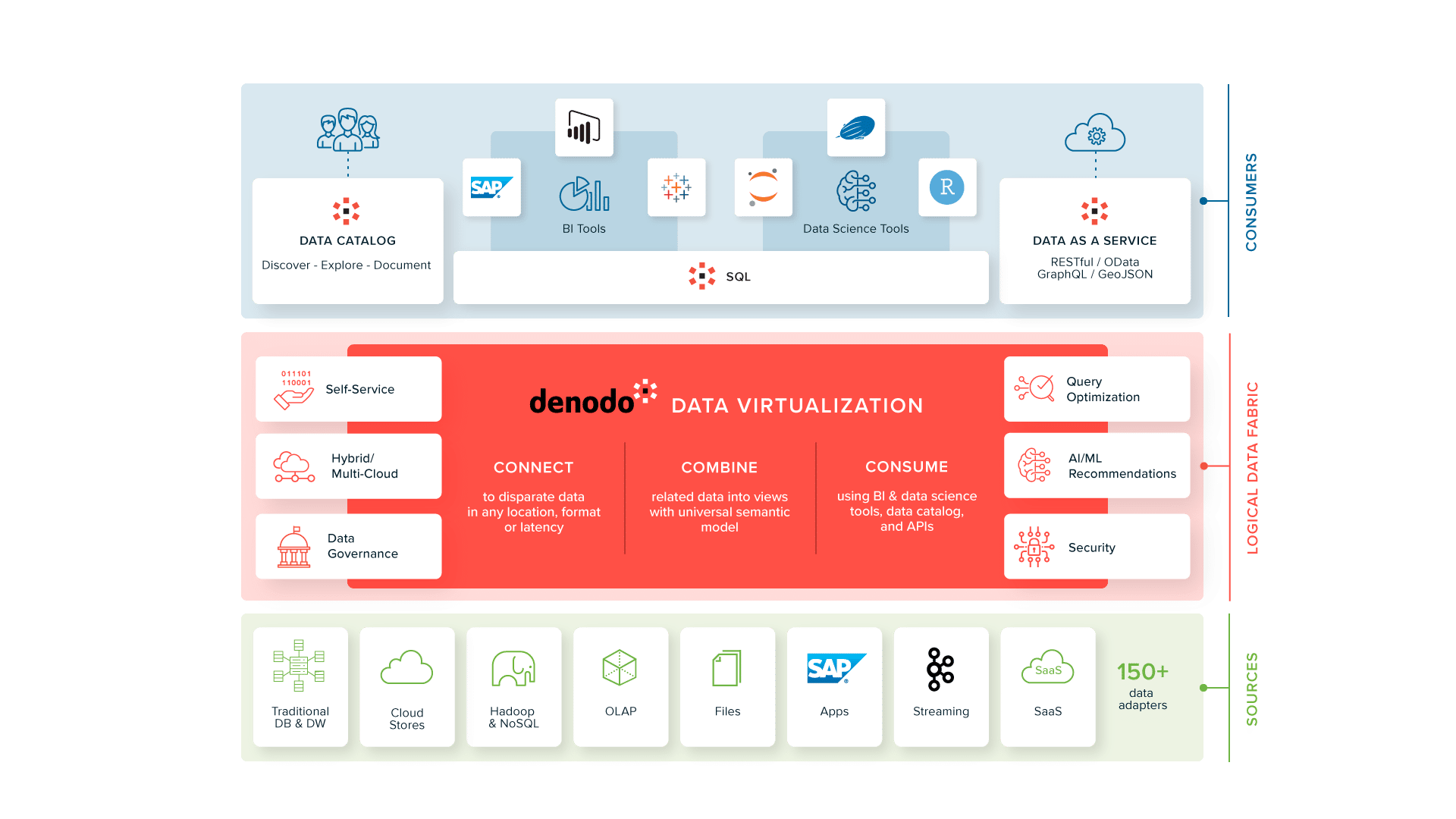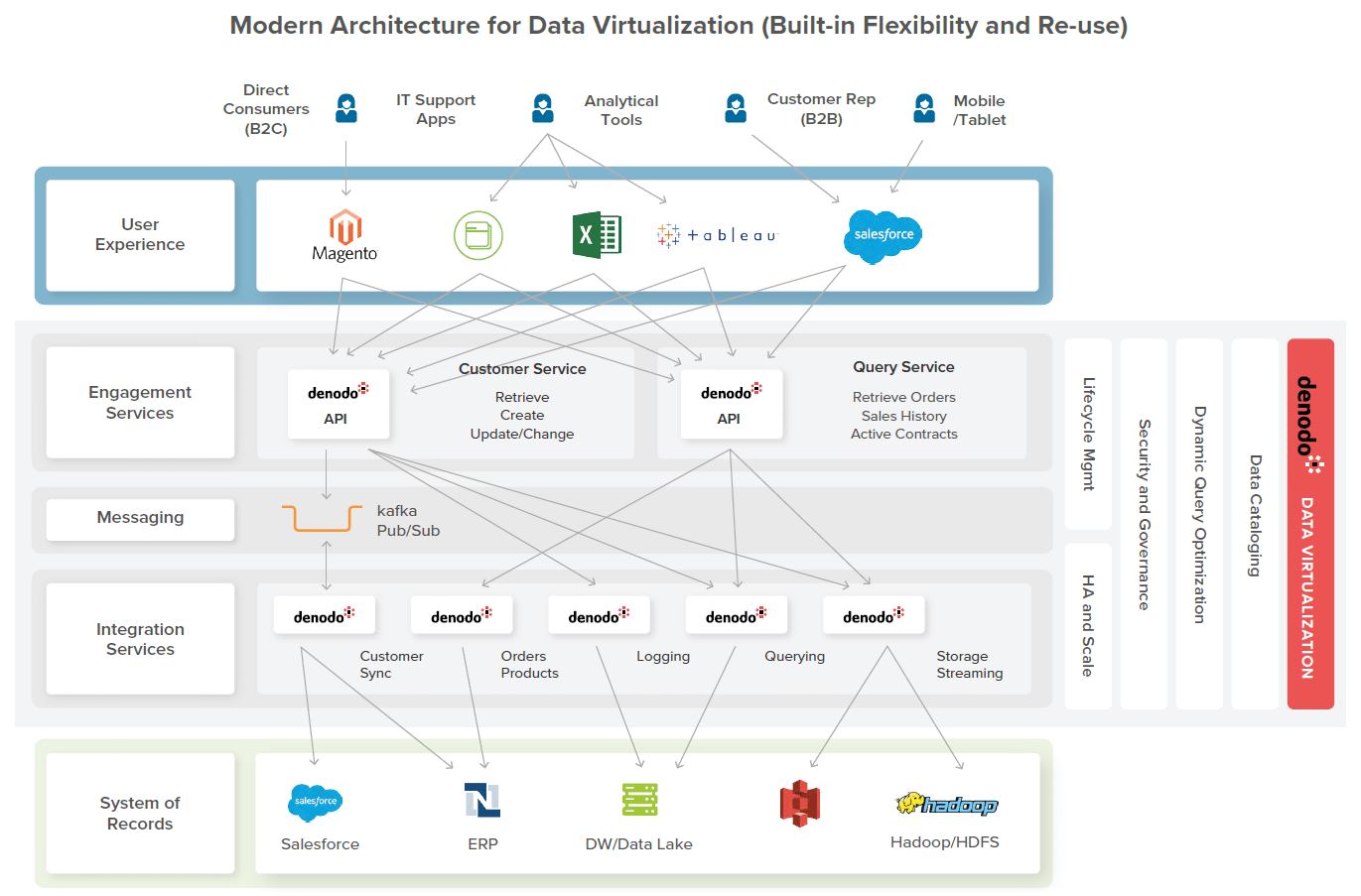
Twenty20 Systems Announces Partnership with dbt Labs™
February 10, 2023
Data Sheet for Boomi to Workato Migration
January 9, 2024
Twenty20 Systems Announces Partnership with dbt Labs™
February 10, 2023
Data Sheet for Boomi to Workato Migration
January 9, 2024Data Virtualization with Denodo
We are living in an age where cheaper storage and greater processing power has made almost all business functions to be data-driven, making data the most valuable asset of any organization. With data being generated, transmitted, and stored at an exponential rate, management of data is becoming more of a challenge with data being constrained to silos and generating disparate sources. Increasingly organizations find it difficult to collect and integrate information from this heterogeneous data to make real-time business decisions. Data Virtualization is a radical approach to this data management challenge by integrating disparate sources as abstraction in a Logical Layer to deliver real-time information for business decision-making and analytics.
What is Data Virtualization and why is it important?
Data virtualization (DV) is a data management method that allows applications to retrieve and manipulate data without requiring to have a base level details of the data such as physical location, data format, access methods, access language, etc
The data virtualization layer forms a logical data layer that integrates all enterprise data across disparate systems and formats, governs the unified data for centralized security and governance, and delivers it to business users in real time.
Data Virtualization’s abilities allow organizations' IT and business to innovate in their business. Some of the benefits of Data Virtualization include the following:
- Easy access to all kinds of data (including data in different formats)
- Avoid redundant data copies and unnecessary movement of data.
- Helps minimize data latency enabling real-time analysis from various data sources
- Complete data integration and data modeling capabilities.
- Reduces the complexity of traditional data management systems to provide a unified virtual layer of data from disparate sources
- Dynamic data catalog and self-service capabilities for data & metadata revelation and data preparation.
- High data security and data governance abilities. Real-time data delivery in any format.
- Ability to create data marketplaces.
- Decoupling business applications from data systems to facilitate data-driven strategies.
- On-premises, cloud, and multi-cloud interoperability. Encapsulation of legacy systems.
There are various data management products that provide Data Virtualization capabilities, however, for the purpose of this blog we will choose to use Denodo Platform. Denodo Platform has been identified as leaders in the Magic Quadrant 3 years in a row for Gartner Data Management Tools.
Denodo: A Data Virtualization powered data management suite
Denodo is a data virtualization platform that has been helping customers with data management challenges for close to 2 decades and is a mature product for a method that recently had more adoption rate. It Provides features such as robust query optimizer (Rule and Cost Based), advanced caching, and self-service data discovery that help serve data to consumers in real-time and a wide variety of formats.

Fig 1. The Denodo Platform Typical Architecture
The typical data eco-systems that form part of the Denodo Platform usage pattern can be categorized as three groups or layers, though it may appear to be a simple product grouping, however, it also groups the significant features that the Platform addresses, the layers are,
- Connect [ to any data source or format]
- Combine [ any models with another, with ease]
- Connect [ to any consumer, wide variety of protocols]
Let’s look into each of these layers a little more closely,
- Connect:
The Connect layer consists of all the data systems that are to be abstracted into the virtual layer. These range from the traditional Data warehouse, Application Databases, Distributed Systems, SaaS Solutions, etc. This layer also can be classified to denote apart from different data storage solutions, it also deals with different types of data storages ranging from standard tuples, columnar structures, semi-structured data formats like JSON, XML, etc. The connect layer is also location agnostic in principle, that is, the source can be on-prem, Cloud or hybrid. With close to 150 Out-Of-The-Box adapters and java-based extensible sources, secured by industry-standard measures like Kerberos, OAuth, and TLS, virtually all the data stores can be connected securely.
2. Combine:
Once the data structures in the wide variety of data storages are abstracted as “Virtual Models” called “Views”, the interoperability becomes as easy as relationally operating on standard Relational Data Structures (like tables). It is this feature, the standard operating model for all the objects in this layer, and the relative ease to operate them that makes the Platform more Powerful, Dynamic, and Agile. Apart from the “Integration” features, it also comes with a suite of toolsets to manage Security, Governance, Self-Service, and AI-ML Recommendations.
3. Consume:
The Integrated models are immediately available to the consumers in a wide variety of access methods. The standardization of relational modeling for no relational sources provided by the Connect and Combine layers allow accessing the models as relational sources using “VQL”, an offshoot of SQL both using JDBC and ODBC. Apart from these, the Platform also allows you to consume the data in popular format/access methods like REST, SOAP, GraphQL, OData, and GeoJSON.
Twenty20 Systems and Denodo
Twenty20 Systems and Denodo have partnered to combine expert consulting services expertise with the industry’s leading data virtualization platform, to provide organizations with impactful, data-driven insights that accelerate speed-to-market solutions.
Working together, Twenty20 and Denodo enable organizations to:
- Realize value – Leverage existing IT investments without having to re-invest in new technologies, through a re-defined, modern architectural approach to meeting the data where it resides today. Results in significant cost savings.
- Accelerate data access and speed-to-market – Business stakeholders gain immediate access to reliable, governed data, for a dramatic increase in speed-to-market. IT can re-focus on becoming true enablers of business outcomes by organizing around innovation and influencing customer experiences through streamlined processes.
A modernized data architecture leads to immediate cost and time savings for businesses, as well as future value in not accumulating technical debt through unnecessary data replication over time.
Twenty20's Modern Data Architecture with Denodo
Our combined solution with Denodo as the data virtualization platform helps customers realize accelerated ROI and address immediate speed to market requirements for their business.
Twenty20's MissionImpact offering that delivers impactful mission critical outcomes to businesses in a matter of weeks aligns well with the architecture and capabilities that Denodo's data virtualization platform brings to the table. It eliminates the need for data replication and the associated increase in data infrastructure spending costs while keeping the focus on driving speed and impact.
One of the common challenges in the data management industry is the need to integrate data sources without replicating the data and make the data accessible to the application on demand, in the formats they expect. The Twenty20 Solution Blueprint leverages the abstraction on the Semantic layer, multi-protocol access points, and Powerful optimizer of the Denodo Platform placed strategically to address the above challenges, which can be visualized as the below architecture.

Fig 2. Modern Architecture for Data Virtualization
The solution is categorized into 3 logical functional areas,
- Integration Services
- Engagement Services
- Real-Time Data Consumption
Integration Services: This logical layer deals with the abstractions or views that connect and combine the different data sources from System of Records like the Data Warehouses, Data Lakes, Excel files, etc and build a generic, holistic view of the data per functional area, say Customer, which collects, cleans and combines data from more than one systems like Salesforce, ERP, etc.
Engagement Services: This logical layer deals with direct abstractions or further customization of the generic entities like Customer to serve the data for a specific requirement. For example, this could be a request to get the orders of the customer for a specific region. This can be delivered as relational tuples by defining the “Derived View” in the Denodo Platform or can be delivered as a JSON/XML on-demand by “Publishing” it as a REST or SOAP Service. Irrespective of the mode of delivery this layer is to address the request of specificity.
Real-Time Data Consumption Services: This Logical layer handles the configuration of the consumers and publishers for the real-time, event-based data flow, like Kafka, and integrate the incoming Real-time data with the Integration or Engagement Service and push the result to the consumers of the same nature, that is, Event-based listeners like JMS Queues or Kafka Topics.
Applications on the User Experience area can choose one or many of the layers from which layer the data needs to be consumed from right from the Relational access for the Dashboard to the mobile app that depends on a GraphQL Query to present data to the end users.
Data Virtualization Reference Case Study
To better understand how Data Virtualization with Denodo works, let’s discuss this scenario where our global health insurance client wants to improve its current data landscape while minimizing the disruption to its core functions, make enterprise-focused enhancements to handle these improvements, and to avoid the problems that arise with an ill-equipped data landscape.
Key Business Needs
The key business need was to build a single unified Common Data Warehouse that would consist of all relevant data extracted from their two existing Data Warehouses coming from two merging entities of our client.
Further, as part of further data cleansing, they wanted to consolidate patient and client data into a single view. The company took a hard look at the state of its data landscape and decided to consolidate patient and clients’ data into a single view.
Finally, the company needed to make these improvements while also reducing time to market for delivering analytical views to business users, minimize disruption to core functions, and leverage existing enhancement capabilities and accelerators.
Our Solution
To improve the state of their data landscape and improve performance, we decided to build virtual views of both their company legacy data warehouses and combined them as a unified view. This was then cached in Denodo to improve performance. The unstructured nature of the company’s data meant that it needed to be cleaned up. For this, we built a virtual view in Denodo using Extract, Transform and Load(ETL) concepts.
To improve efficiency and optimize existing developmental workflows, we built a bespoke DevOps automation process. To ensure that the security concerns were addressed, we setup a Lightweight Directory Access Protocol(LDAP) and Secure Sockets Layer(SSL) security and governance. To further improve the state of their developmental workflows, we also helped setup a Continuous Integration/Continuous Deployment process for best practices.
Business Outcomes
- The legacy data warehouses were maintained and replicated on the cloud to minimize disruption to the company's core functions.
- The patient and client data is now unified and the overall data landscape of the company is now improved.
- Reduced time to market for analytical insights.
- Data security is now improved with LDAP and SSL security and governance.
- For versatility, we provided the client management with the options of moving forward with a Denodo front-end and Snowflake/Databricks back-end option vs a classic ETL approach by utilizing existing informatics to build a single Teradata Data Warehouse.
Conclusion
We hope this blog provided an in-depth explanation about how Data Virtualization with Denodo works. If you have any questions or feedback related to this article, please feel free to reach out to us using the “Contact Us” page.
Want to discuss more about Data Virtualization with Denodo? We’re always open to chat!
About the Authors

Saravanan Prasadh(SP)
SP is our passionate data architect based in Bangalore. He's a true tech enthusiast who leverages his extensive knowledge and experience to design and implement cutting-edge data solutions. He is also a people person who brings a patient and detail-oriented approach to every project. In his free time, he can be found reading his favorite DC Comics. With his expertise in designing cutting-edge data solutions, SP is an invaluable member of our team.
Connect with SP here!

Sowbhagya S
Sowbhagya is one of the software engineers based out of our Bangalore office. An artist in her free time, Sowbhagya loves to draw anime characters. She can often be found spending quality time with her beloved dog. In addition to caring for her dog, she also prioritizes her own health and wellness by working out regularly, whether it's hitting the gym or working out at home. She is also passionate about cooking and enjoys experimenting with new recipes in the kitchen.
